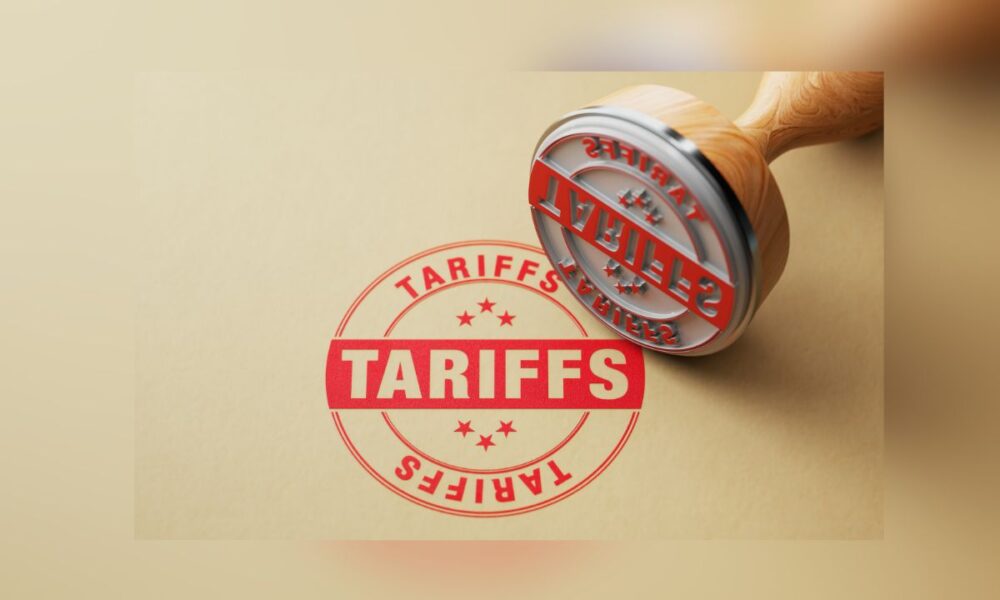President Donald Trump has signed an executive order imposing higher tariffs on imports from more than 60 U.S. trading partners, effective August 1. This move escalates his aggressive trade policy aimed at reducing trade deficits and boosting American manufacturing.
The new duties, ranging from 10% to as high as 41% for countries like Syria, mark a significant shift in global trade dynamics, with potential ripple effects on consumers and businesses worldwide.
The tariffs, detailed in a July 31 executive order, apply to goods “entered for consumption, or withdrawn from warehouse for consumption, on or after 12:01 a.m. eastern daylight time on August 1, 2025.” The administration set the deadline in April, when Trump declared a “national emergency” over trade deficits and introduced a 10% baseline tariff on nearly all trading partners. That deadline was extended from July 9 to August 1 for most countries, with a couple of exceptions.
“For most economies and most of our trading partners, the cost of doing trade tomorrow will be higher than it is today,” Greg Daco, chief economist at EY-Parthenon, said.
The 10% tariff on goods entering the United States will stay in place. However, this rate will apply only to countries where the U.S. exports more than it imports, which includes the majority of nations, according to a senior official in the administration.
Countries with which the U.S. has small trade deficits face a 15% tariff, while those with larger deficits, such as Syria (41%), Laos (40%), and Myanmar (40%), face higher rates.
Some countries saw adjustments from earlier threats: Madagascar’s tariff dropped from 47% to 15%, while Switzerland’s rose from 31% to 39%.
A handful of countries, including Japan, South Korea, and the 27-member European Union, secured trade deals that cap their tariffs at 15%, lower than the 30% initially threatened.
The EU, for instance, agreed to eliminate duties on certain U.S. exports in exchange, according to a senior administration official. The U.K. and Vietnam also reached agreements, with Vietnam facing a 20% tariff plus a 40% levy on transshipped goods.
However, major trading partners like Canada, Mexico, and China face separate treatment due to their significant trade volumes with the U.S.
Canada, the U.S.’s second-largest trading partner, will see tariffs on non-exempt goods under the U.S.-Mexico-Canada Agreement rise from 25% to 35% starting Friday. The White House cited Canada’s insufficient efforts to curb illicit drug trafficking, particularly fentanyl, as justification.
Canadian Prime Minister Mark Carney expressed disappointment, stating, per CBS News, “Canada accounts for only 1% of U.S. fentanyl imports and has been working intensively to further reduce these volumes.”
Carney vowed to protect Canadian industries like lumber, steel, and automobiles, promising to diversify export markets and invest in competitiveness.
Mexico secured a 90-day extension, maintaining its 25% tariff rate, while China’s 10% tariff, set to expire August 12, is expected to be extended for three months as negotiations continue.
China’s Foreign Ministry spokesperson Guo Jiakun criticized the tariffs, saying, according to CBS, “China’s opposition to the abuse of tariffs is consistent and clear. Tariff and trade wars have no winners. Protectionism is in no one’s interests.”
Trump’s tariff strategy, rooted in his “America First” policy, aims to reduce trade deficits, generate federal revenue, and incentivize domestic manufacturing.
The U.S. Treasury reported $27 billion in tariff revenue in June, more than triple the amount collected a year earlier. The administration claims these policies have opened markets worth over $32 trillion, benefiting American businesses, according to White House spokesperson Kush Desai.
However, critics warn of economic fallout.
Tariffs are typically paid by U.S. importers, who often pass costs to consumers, raising prices for goods like clothing, electronics, and appliances. Companies like Adidas and Nike have already announced price hikes, with Nike estimating $1 billion in added costs due to tariffs on goods from Vietnam and Indonesia.
Economists, including those at Goldman Sachs, note that countries without trade deals account for 56% of U.S. imports, which could amplify potential price increases. The Yale Budget Lab projects a 0.6% GDP reduction in 2025 and long-term economic losses of $80 billion to $110 billion annually.
Legal challenges also loom.
In May, the U.S. Court of International Trade ruled that Trump’s use of the International Emergency Economic Powers Act (IEEPA) to impose tariffs was unlawful, questioning whether trade deficits constitute an “extraordinary and unusual threat.”
Oral arguments in an appeal began Thursday, with Judge Raymond Chen expressing skepticism about the emergency declaration.
“Can the trade deficit be a extraordinary and unusual threat when we had trade deficits for decades?” Chen asked.
A ruling could take weeks, with potential Supreme Court review, but Trump’s administration has vowed to use other levers to maintain tariffs.
The administration’s goal of securing “90 deals in 90 days” fell short, with only a few framework agreements finalized, such as those with the U.K., Japan, and the EU.
“It’s important to note that we don’t even have any deals as deals are commonly understood, except maybe the U.K. agreement, which is still being discussed,” said Alex Jacquez of Groundwork Collaborative, per CBS MoneyWatch.
Global markets reacted swiftly, with U.S. stock futures for the S&P 500, Dow Jones, and Nasdaq dropping nearly 1% in overnight trading.
“In any other time frame, one would have said that having the EU, Korea, Japan, Philippines, Indonesia and the United Kingdom covers an awful lot of world trade,” said Alan Wolff, a senior fellow at the Peterson Institute for International Economics.
Trump, in an NBC News interview, insisted his strategy was “very well, very smooth,” citing tariff revenue and stable inflation.


